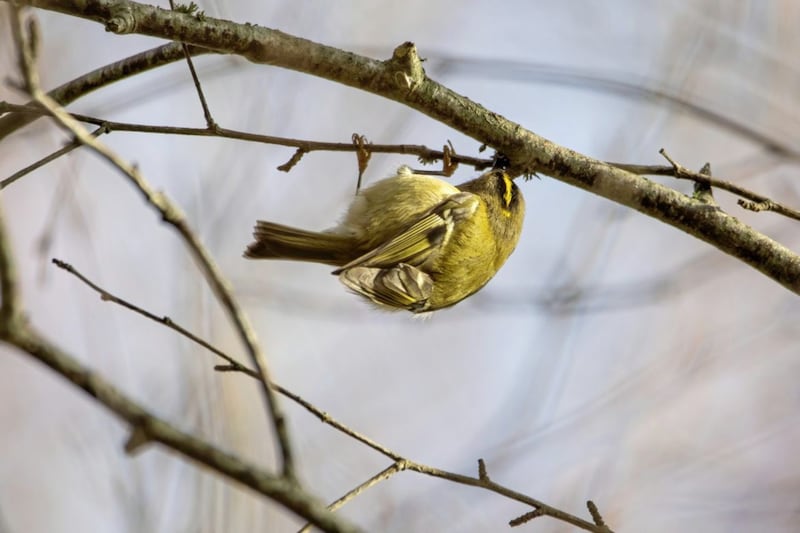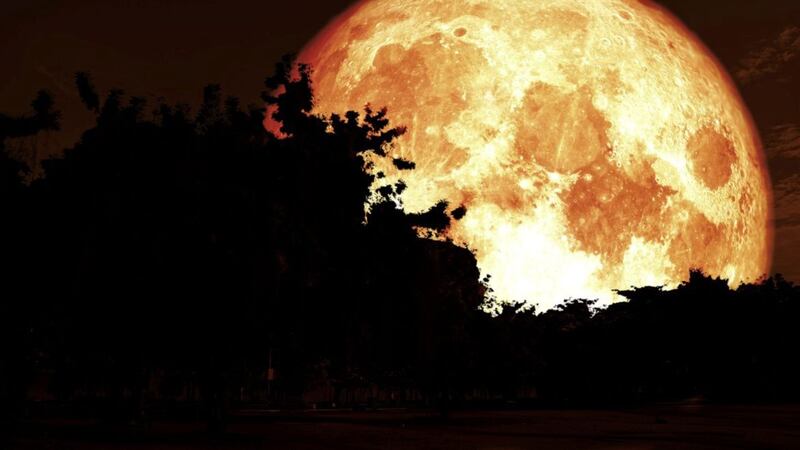AUTUMN'S palette of golden colours has been prominent in recent weeks, as cooler weather and reduced sunlight prompt the green pigment chlorophyll, essential in the process of feeding our tress, to break down and reveal all the tones of yellow, orange and red which now adorn our leaves and so enrich our outdoor world.
This season of shifting colour is elegantly recorded by John Clare, England's 'peasant poet' in his Autumn Morning when he writes:
'Look where we may the scene is strange and new
And every object wears a changing hue'
Autumnal change was further asserted recently by the dramatic Hunter's Moon on the evening of October 20, which followed September's Harvest Moon. Both full moons are directly linked with the activities of our farming ancestors who used their luminance after sunset to stay out longer for harvesting crops and to hunt and gather-in food stocks for the harsh winter months ahead.
With a short period of darkness between sunset and moonrise around this full moon, hunters were able to continue stalking their prey as daylight ended, hence the name, 'hunter's moon'.
The small flocks of goldcrests working frantically through the boughs of my rowan and birch in search of any available insects or spiders have been another timely link with the theme of things golden and winter preparations in our natural world. Their early morning visits are now a regular occurrence, indicating that Ireland's smallest breeding bird, like our ancestors, is finely tuned to the changing season and the new challenges it brings.

This tiny bird of just five grammes belongs to the Kinglet family, hinted at in its Latin name Regulus – 'petty king' – a reference to the goldcrest's golden orange/yellow crown stripe, bordered by a black stripe on either side.
The golden crown has partly helped earn it the title 'king of the birds' in European folklore. The goldcrest's striking crown is also noted in its Irish name, 'Cíorbhuí' ('yellow crest').
While the crest on the female bird is completely yellow, lacking the orange tint of the male, both adult birds share olive-green plumage, and noticeable white wing-bars.
A curious association between the bird and the wren caused confusion in the past as it was often called by the old name, golden-crested wren, before finally being shortened to goldcrest in 1883. This older name is evident in other Irish terms for the bird, such as Dreoilín Easpaig/ Easbuig, the Bishop wren, (the yellow crest likened to a bishop's mitre) and Dreoilín Ceannbhuí, Yellow-Headed wren.
Charles Tennyson Turner in his poem on the bird, The Gold-Crested Wren (1868), wrote of 'The memory of thy delicate gold crest... the crown of Art'.
As the small flocks flit through the branches checking undersides of leaves for any morsels of food, high pitched "zi-zi-zee" calls convey an urgency in the search for food to sustain their tiny frames.
Naturally birds of broad-leaved and coniferous woods, goldcrests, often travelling with groups of long-tailed tits, will venture into gardens and urban areas, especially during autumn and winter.
Despite their diminutive size, many goldcrests will also migrate here from countries in northern Europe to swell local numbers during winter, a fact which surely helped nourish the old legend telling how they sometimes hitched a lift on the feathers of arriving woodcocks, giving them the name 'woodcock pilot'.
Watching the miniature birds sift and dance through the trees under the Hunter's Moon, I wished them a fair wind and wondered how many would make it through the harsh months ahead as they forage by day and huddle close by night.









